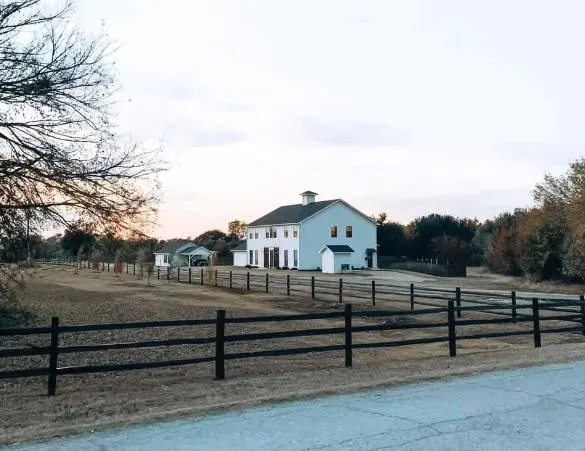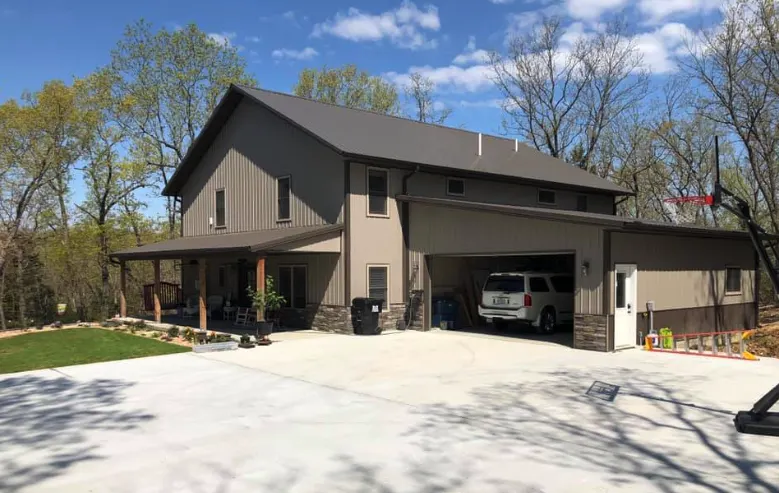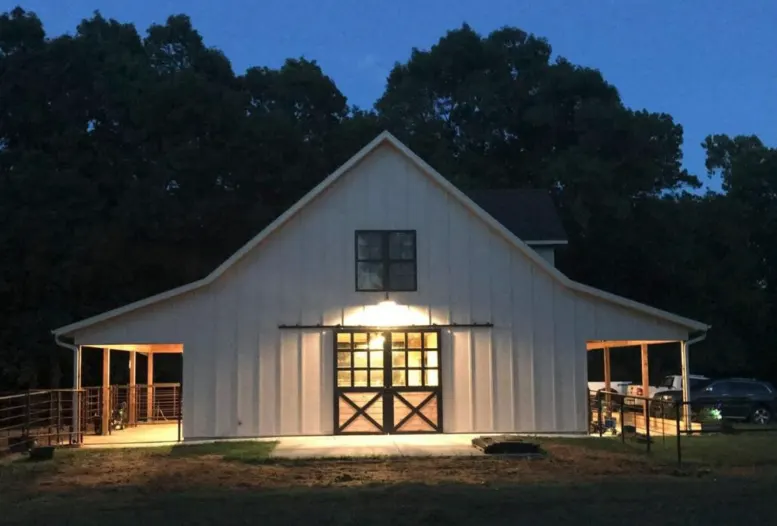When you build a barndominium, you will have to pay taxes just like you would with a traditional home. However, there are some important differences that will change depending on where you live. You may also pay a different rate depending on how your barndominium is laid out. Understanding barndominium taxes and how they are calculated can help you be prepared.

Before you pay your barndominium taxes, you will most likely have to get your home appraised. Your county assessor’s office will send an appraiser over to see what your tax rate should be. With a good understanding of barndominium taxes, you can be ready for what your liability will be. Being prepared for your tax liability is a big part of being a homeowner and a barndominium is no different.
Page Contents
How Do Barndominium Taxes Work?
Barndominium taxes work like any other property taxes that you would pay for a home. A county tax assessor will either come out to your property or they will look at comparable properties in the area. This can potentially lead to issues for barndominium owners. Because their homes are going to be much different than others in the area, they may have to work with the assessor and challenge the appraisal.
Many assessors count the unheated square footage of a barndominium shop in the floor plan toward the total taxable. Other assessors only count the heated space. It’s a difference that can add up to thousands of dollars and you should know what your particular county’s standards are. This way, you can be ready to potentially challenge the assessment and get a better tax rate.
Potential Barndominium Tax Advantages
Barndominiums have gained popularity not only for their unique and versatile living spaces but also for potential tax advantages they can offer to homeowners. These advantages can vary depending on your location, local regulations, and specific circumstances. Here are some potential tax benefits associated with barndominiums:
- Agricultural Exemptions: In certain areas, barndominiums built on property designated for agricultural use might qualify for agricultural exemptions. This can lead to lower property tax rates compared to residential properties. However, qualifying for such exemptions often requires meeting specific criteria, like maintaining a certain amount of acreage for farming or ranching activities.
- Cost Allocation: Barndominiums typically combine living spaces with functional areas like storage, workshops, or agricultural facilities. This hybrid nature can allow for cost allocation between personal and business purposes. As a result, you might be able to deduct a portion of your construction and maintenance expenses as business-related, potentially reducing your taxable income.
- Energy Efficiency Incentives: Many barndominiums are designed with energy-efficient features such as solar panels, geothermal heating, or high-performance insulation. These energy-saving elements can make you eligible for various tax incentives, rebates, or credits provided by federal, state, or local governments to encourage sustainable living.
- Home Office Deductions: If you use part of your barndominium as a home office for business purposes, you may be eligible for deductions related to the use of that space. This could include a portion of your mortgage interest, property taxes, utilities, and maintenance costs, which can lead to significant tax savings.
- Depreciation: Like traditional homes, barndominiums can be subject to depreciation, allowing you to deduct a portion of their value over time. This can provide tax benefits by reducing your overall taxable income.
- Rural Property Benefits: Barndominiums often find their homes in rural or semi-rural areas. These locations might offer property tax advantages due to their classification as rural properties. Lower property tax rates and potential exemptions could contribute to more affordable homeownership costs.
It’s important to note that tax regulations vary widely by jurisdiction and can change over time. To fully understand the potential tax advantages of owning a barndominium, it’s recommended to consult with a qualified tax professional or financial advisor who is knowledgeable about your local laws and regulations. They can provide personalized guidance based on your specific situation and help you make informed decisions to maximize the tax benefits of your barndominium property.
What Tax Appraisers Look For
In many counties, it just boils down to how many square feet you heat and cool. Those are the easy entities to get along with. You can check and see what your particular county checks for their assessments.
It’s the counties that want to fold everything under one roof into what they consider to be “developed land” that may give you tax sticker shock when you get your bill. That will, in turn, drive you to consider legal alternatives for relief.
Another builder says that in cases where the barndo has a large “barn” attached to it — many would call this area a shop, but in any case, not part of the actual living quarters — assessors take that into consideration and only tax the “livable” square feet. Particularly if the whole structure sits on a large acreage.

But if, say, you build a 5000 sq ft barndo — 2500 sq ft of which is a shop housing your motor home or two ATVs and a pontoon boat — and your footprint takes up much of your 1.5 acres, then you will likely see no mercy from the taxing officials.
“I had a friend who had a small barndominium — like 2500 under roof — and he was taxed as a normal house,” says a third person. “But someone else I know built just a metal shop on his property. And the county tax office told him that if he added windows to it, it would be taxed at a higher rate, even though the use would be the same.”
Reasons to Appeal Property Tax Assessment
The main reason for appeal, of course, is that your bill may bear no relation to what your barndo is actually worth, or at least what you built it for in terms of dollars spent.
Another reason would be, as in the examples above, your barndo has been taxed in total, counting your 5000 sq ft riding arena at the same rate as your 900 sq ft living quarters. (Believe it or not, this very scenario has occurred a few times with huge barndo structures).
How to Challenge a Property Tax Assessment
If you do not agree with your property tax assessment, you have options available to you. As a taxpayer, you can challenge your property tax assessment and make an appeal to the assessor’s office. This will require you to fill out an Assessment Appeal Application, which will differ from county to county. Generally, though, this application can be procured from your local county clerk, where you will also pay the fee required.
This Assessment Appeal Application will then be reviewed by the appeals board, which will rule on your appeal. However, it should be noted that this won’t always lower your property taxes. If the appeals board finds that you should actually be paying more, you could end up with higher tax bills. You should sit down and weigh your risk before you decide to go this route.

In some cases, the county assessor will not agree with the ruling made by the appeals board. If this happens, you could end up having to write a property tax appeal letter to the assessor. The assessor is the final word on your barndominium taxes, so you should make sure this is done properly. Having all the evidence as well as similar cases to yours can help.
How to Write a Property Tax Appeal Letter
When writing a property tax appeal letter, you should lay out your case plainly and informatively. Include any relevant information like how much a barndominium costs, floor plans, and blueprints of your barndominium.
This will help the assessor figure out if you have been paying too much for barndominium taxes. It should also include things like the construction year, the land acreage, and the building’s square footage.
Once you have submitted your letter, the assessor’s office will let you know their ruling by mail. Depending on how backed up the office is, you may not get word on your barndominium taxes right away. If this happens, you should plan to pay the rate you have paid in the past. This ensures that you won’t be on the hook for back taxes in the next year.
Conclusion
Barndominium taxes are relatively simple to figure out but should be carefully examined. If you think you have been paying too much, it’s important to be able to make your case. Knowing how barndominium taxes work can help you through the process and ensure that you get a fair assessment.
If you would like more guides like this one, check out the rest of BarndominiumLife.com. There, you will find more helpful tips and tricks from the pros. You will also find featured barndominiums, barndominium floor plans, and information on financing and insurance. Knowing as much as you can will help you get the best results for your dream home.
